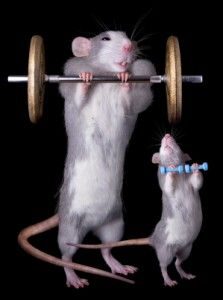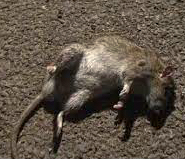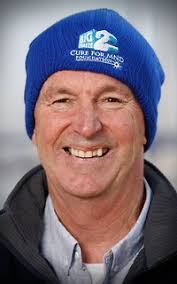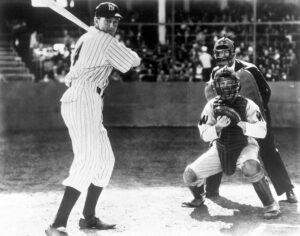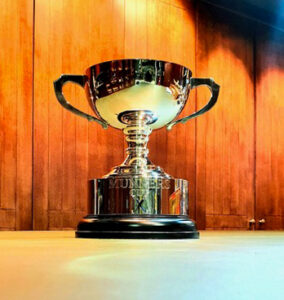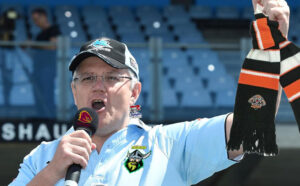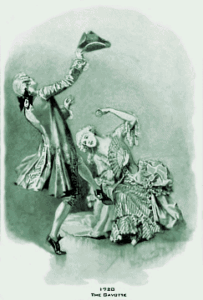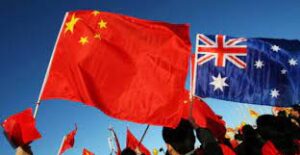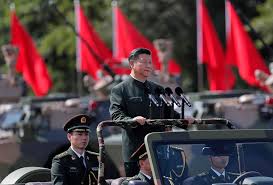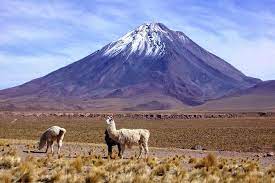I have always given an association with the number of the blog, which this week is the 137th in a row. Apart from my first one, each blog has a label associated. The words “Gay Crusader” would evoke a great number of associations in the modern day.
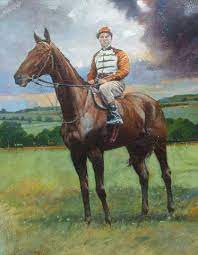
I thought I was being suitably obscure. Not true, if you Google “Gay Crusader”, there is the answer at the top of the pile. Gay Crusader was a horse, and a very good one at galloping one mile, four furlongs and six yards. Unfortunately, there are no rods, no poles nor perches; no links nor chains, not to mention the lack of leagues and fathoms – nor, for that matter, inches in this meticulous description of aristocratic length.
O Hail Caesar
I have been accused of being too easy on the Premier of Victoria, but this latest manoeuvre to usurp the power of the Chief Health Officer is fraught with all the dangers of a politician assuming control over an area in which he does not have the expertise.
The Australian public, particularly in Victoria, has become sick of lockdown. It is difficult when one cannot see the enemy. Just as Victoria thought it was free of COVID-19 it was imported from NSW, due to the attitude of the then Premier, disregarding her Chief Medical Officer’s advice.
The Chief Health Officer is appointed for his skill in providing the Government of the day with public health advice. Up to the time of COVID it has been a very dozy job in Victoria – a recent Chief Health Officer was virtually invisible during his tenure. However, the Chief Health Officer has delegated powers for a reason, and in the event of a serious public health matter such as a pandemic, it is important to designate single point responsibility for the execution of legislative orders, but with a clear outcome for such execution.
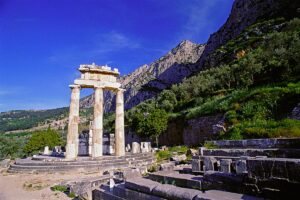
Clearly Chief Health Officers are no Delphic oracles, but they portray their expertise in both their attitude and behaviour – running the gamut between the laissez-faire and the interventionist. Some are more risk averse than others. Yet their powers are circumscribed and, unlike the Premier, they don’t have powers outside health to proscribe under the guise of a health emergency.
Premier Andrews’ current intention to usurp these Chief Health Officer powers is a vast overreach, and in this instance was prompted by his disagreement with the Chief Health Officer’s eliminationist strategy, or should I say demand for an unconditional surrender by the Virus, rather than an uneasy armistice.
The past two years have catapulted previously obscure Chief Health Officers into media stardom, with the unfortunate consequence of having to compete with the associated epi-babble. Yet if last year there had not been Chief Health Officers with that power, would it have taken the politicians a longer time to declare an emergency?
Memories are short. Remember, Premier Andrews at the start of the pandemic without experience or indeed knowledge was very hesitant in cancelling the Grand Prix in 2020 – and also the Prime Minister was inclined to go to the football rather than take the incipient crisis seriously.
Politicians hesitate. This legislation in Victoria throws the normal sop of having an advisory committee. In most of my experience these committees attract people with the gift of the gab – and the ability to obfuscate and confuse the politician who has, prima facie, not that much knowledge, apart from knowing their constituency and not liking unpopularity.
There is a flagrant example in NSW of this political interference, brushing aside public health guidelines designed to protect the community because they interfere with those popular pirouette steps – harks back to March 2020. The impulsive decision to retain popularity – forget about the Government’s public health rule. You know the one which reads:
Until you receive a negative result from your day 7 test you must not go to any:
- high-risk settings, such as childcare, aged care, disability care, healthcare, schools, education and correctional facilities
- large gatherings (e.g. concerts, football matches)
- hospitality venues, except to pick up take-away food or beverages.
This does not include accessing medical care, or aged or disability care services.
How inconvenient for the impatient unthinking incoming Australian. You drop your guard, how inconvenient that the West Hoxton, sorry West Epping party, just can’t be missed.
Premier Andrews, as an example for your Brother Premier, I implore you to leave well alone – but you won’t because although you generally have reasonable judgement, you have been a control freak, with the thinness of your dermis still being a matter of conjecture. The solution is definitely not to set up a tangle of bureaucracy as proposed because that will just introduce more uncertainty, especially when there are other variants in the offing.
Maine Stream
The Supreme Court has rejected an emergency appeal from health care workers in Maine to block a vaccine mandate that went into effect Friday.
Three conservative justices noted their dissents. The state is not offering a religious exemption to hospital and nursing home workers who risk losing their jobs if they are not vaccinated.
Only New York and Rhode Island also have vaccine mandates for health care workers that lack religious exemptions. Both are the subject of court fights. On Friday, a federal appeals court panel upheld New York state’s vaccine mandate for health care workers, rejecting arguments by lawyers for doctors, nurses and other professionals that it did not adequately protect those with religious objections.
As is typical in emergency appeals, the Supreme Court did not explain its action. But Justice Neil Gorsuch joined by Justices Clarence Thomas and Samuel Alito said in a dissent for himself and two fellow conservatives, that he would have agreed to the health care workers’ request.
Justice Amy Coney Barrett noted in a short statement agreeing with the court’s decision not to intervene that the justices were being asked to “grant extraordinary relief” in a case that is the first of its kind. She was joined by a fellow conservative, Justice Brett Kavanaugh.
Democratic Gov. Janet Mills said she was gratified that the mandate was upheld, saying it’s imperative for hospitals to “take every precaution to protect their workers and patients against this deadly virus.”
“This rule protects health care workers, their patients, and the stability of our health care system in the face of this dangerous virus,” she said in a statement. “Just as vaccination defeated smallpox and vaccination defeated polio, vaccination is the way to defeat COVID-19.”
Maine’s requirement was put in place by the governor. A federal judge in Maine declined to stop the mandate, concluding that the lawsuit was unlikely to succeed. The Oct. 13 decision prompted a flurry of appeals that landed, for a second time, in the Supreme Court.
Dozens of health care workers have opted to quit, and a hospital in Maine’s second-largest city already curtailed some admissions because of an “acute shortage” of nurses.
But most health workers have complied, and Maine residents in general have been supportive of the vaccine. The Maine Hospital Association and other health care groups support the requirement.
We have holidayed in Maine, the Pine Tree State, on more than one occasion. We nearly bought a house in Maine in that brief window when the Australian dollar approximated the US dollar in value.
Bordering Canada, it’s only US State border is with Massachusetts, of which it was once part. It has been a traditionally conservative Yankee State, where slavery was outlawed in 1783. Yet this State has a serious ambivalence.
In 1820, the year Maine became a State of the Union on the anti-slavery slate, the U.S. passed an act that made participation in the slave trade an act of piracy. Yet, dozens of Maine vessels engaged in the slave trade illegally during this period. Thousands of enslaved people were transported and traded, leading to huge profits for slave traders – some of whom were Maine sea captains who are remembered as leading citizens of the day. Much of the millions of dollars from the slave trade funded the growth of New England’s economy.
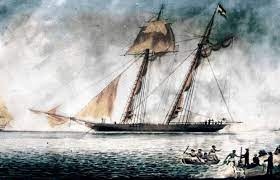
Thus, Maine has tucked away this heritage; and now in the forefront of COVID-19 vaccination campaigns, it is increasingly leaning towards becoming a permanent “blue” State. Yet it still has a very prominent Republican Senator, Susan Collins, who has been one of the incumbents since 1996. The other Senator is a Democratic-leaning Independent. In line with the population, the State is only entitled to two representatives in the US Congress – both Democratic.
For a population of just over one million people the Capital, Augusta, is home to 154 members of its house of representatives and 31 state senators, both houses dominated by the Democrats and with a Democratic Governor. That is the profile of a State that has mandated all health workers, without exception, be vaccinated against COVID-19 – and the Supreme Court of the USA, not known for its liberalism, has upheld the decision.
So, what are you waiting for Australia? Mandate!
By the way the Maine politicians get bugger all remuneration, probably all up less annually than a Darryl Maguire consultancy demand.
Be quiet. Eyjafjallajökull is capturing carbon.
I was browsing through an old New Scientist and I came upon a mention of the Eyjafjallajökull volcano, which erupted in 2010 in Iceland. It is a forgotten fact that the emission then from the volcano of between 150,000 and 300,000 tonnes a day was less than the grounded airlines would have emitted if they had been able to fly. That was 2010.
I went to Iceland three years later. Driving around this volcano, it was very quiet and the sky was cloudless and very blue. The planes were back flying.
Iceland is a geothermal hotspot, with many volcanoes. A boundary between two tectonic plate runs through the country, and it is strange knowing that the shifting of the plates beneath your feet is the fault line ready to quake.
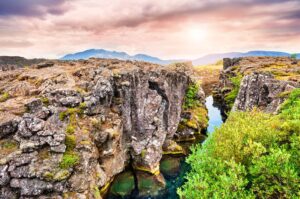
Iceland is thus unusual. It belies its name. None of the country is within the Arctic Circle. From the airport to Reykjavik, there is a plain of basalt – it is a bare landscape. Yet in this plain is the famous tourist attraction, the geothermal pool known as the Blue Lagoon, a heated oasis full of tourists. I stand on a bare spot on the South Coast and look out to the North Sea; I had been told there was not a skerrick of land between where I was standing and the Antarctic Continent. There are many of these instances – “nowhere else”…
The Hotel Ranga is about an hour’s drive from Reykjavik and, as proved, it was an ideal place to see the Aurora Borealis, although it would have been preferable to have a room on the north side of the hotel to view the phenomenon, as I found out. In many ways, Iceland is very important as viewing the Aurora here is very convenient. One does not have to struggle through the snow to see it. Here at this isolated Hotel, it is just a matter of stepping outside.
Then one afternoon going down the road to the nearby village of Hella, drifting on whim around 2.00 pm into an empty café about to close, the owner hospitably cooked me a magnificent cod pie while I waited. That seemed to be the Icelander way. The land was full of more friendly surprises.
What has happened in relation to climate change in Iceland has been reflected by the unique geology of this country where the uptake of carbon capture and storage has been adapted to its predominant basalt rock structure.
As a result, Iceland has several high-temperature geologic zones, where the underground temperature reaches 250c within 1km depth, and in its so-called “low-temperature” zones, the temperature reaches up to 150c at the same depth. Permeability, the porous nature of such rock, also plays a role in how fast mineralisation of CO2 can happen here. Basalt is such porous rock and assists this faster reaction; elsewhere in this favourable rock formation the mineralisation of CO2 may take thousands of years.
In Iceland, the dissolved gas is injected into the rock formations at a depth of about 500m, where the CO2 can rapidly turn into minerals. In Iceland it takes about two years for 95% of the CO2 to be mineralised. The process can take more or less time at other sites, depending on a few factors. One is the depth at which the carbon is injected, and another is the temperature of the rock formation – the rate of the mineralisation process is generally faster at higher temperatures. Bedrock still must contain sufficient amounts of calcium, magnesium and iron. These metals are necessary because they react with CO2 to form carbonate minerals needed to permanently store the CO2.
This year, the Orca plant, 40 kilometres south-east of Rejkavik, designed to capture carbon, is now online and is said to extract annually 4,000 tonnes of carbon dioxide from the atmosphere, equal to the emissions of 790 cars. Not much. Thus, it is still essentially an experimental facility.
Despite all the potential advantages of Iceland, this is a salutary piece of advice as our Australian government still waves this technology around as a solution to climate change.
As I have pointed out previously, carbon capture overall is a dud. The extent of its usage in Iceland only says that it has the geology can make minor difference, which may at most offset the carbon dioxide emitted by Iceland’s heavy industry, in particular its aluminium smelting.
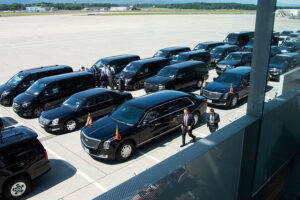
The lesson here is very clear. When the annual amount of carbon dioxide to be removed needs to be 33 billion tonnes for an effective technology, this facility in one of the most advantageous positions on the planet removes in a year about 3,600 metric tonnes, probably the same amount of carbon dioxide from the atmosphere as emitted by all the limousines of those attending the Glasgow conference. After all, the US President is reported to have had a cavalcade of 85 cars because of COVID-19 restrictions. It seems a matter of what you lose on the…oh, I forget the rest of that aphorism. It must be the nitrous oxide fumes affecting me.
You want a Sharkies jumper, Manny?
Australia has a major embarrassment. You let a dolt in a baseball cap run the country, and then watch aghast at what happens next.
In Rome, the Prime Minister, with his private photographer in tow, interrupts a private discussion President Macron is having with someone else. Macron is civil; he does not take off his mask, but his eyes say it all. An uncivil person appealing to a redneck constituency – unapologetically. Boy, were we impressed?
Then there was Morrison’s speech – the normal meaningless aggressive diatribe in an empty auditorium. Donald Trump would have applauded. Nobody in Glasgow was listening.
The image of him sitting at the G20 table in Rome, sniggering with the Brazilian President Bolsonaro, has not yet made it to our local media. Macron is in the distance. Trying to muscle in on the photo-opportunity next to Boris Johnson, Morrison actually ends up next to Angela Merkel, who turns away from him as soon as the photoshoot is over. On this occasion, he did not move forward as Macron walked past, neither acknowledging one another. So much for meeting and greeting each other.
Macron has then made the last devastating remark, namely that Morrison lied. If he lied to the French President, who else?

In any event, the stoush continued along the kerbsides of the Gorbals, with the Baseball Cap saying he would not have his country sledged. I was bewildered, as President Macron had very carefully separated the country from The Baseball Cap – very pointed in his accusation. No sledging of Australia by Mannie, only a pointed reference to you, mate. Julie Bishop, on your selective leak of private government correspondence, has commented: “I’m concerned that the rest of the world will look at Australia and say: Nah. Can Australia be trusted on contracts not to leak private messages?”
What can we expect next? I think he is coming home, concentrating on his political loom trying to spin a jacket of credibility to replace the shreds and tatters of his current international reputation. Meanwhile Glasgow proceeds. Photo-opportunities with the remnant military force still overseas.
Meanwhile, Biden and Macron are getting together, Biden incidentally throwing Morrison under the 2CV while promising Macron that Kamala Harris will visit Paris soon. Back here in Oz, it is increasingly apparent that the nuclear submarine program is just the heading of a media release and will it ever happen?
Advances in technology, as you still glibly spout, Prime Minister, will ensure that it will never happen. Any US body of significance visiting Australia in the wake of this dustup? I’d doubt it; maybe the odd silver-haired chap in braid sent to keep Dutton and Abetz and the other sabre-rattlers happy.
But back to the Road to Glasgow; Macron seems more interested in Africa where its Francophone countries are increasingly under threat from al-Quaeda type insurgencies – the fundamentalist Islamist force. Biden wants to assist. This seems to be the immediate battleground, not the South Pacific as we were led to believe when AUKUS was at its most raucous. The French will bide their time until after the Australian election.
China and America are now in conversation, and the likelihood of an imminent invasion of Taiwan is increasingly unlikely. The Chinese have done their sums on the cost of invading Taiwan. Nevertheless, keep the cauldron boiling, it keeps the normal suspects here in Australia suitably frothing.
The Taiwanese are adept in providing all expenses paid trips to foreigners who they think may be able to push the Taiwanese barrow at the least cost, and who can still rattle a cage in Australia. I have experienced such extravagant hospitality when the Taiwanese mistakenly thought me able to rattle a cage or two – in my case a birdcage.
As for Biden discussing anything substantial with Morrison, fat chance. Biden seems more concerned with Recep Erdogan and him threatening to buy Russian, rather than American fighters for Turkey.
Mentioning Turkey reminds one of the Boris, the one of Turkish heritage. He still seems willing to talk to Morrison, but if Morrison clumsily helps wreck the Glasgow meeting, another “dear friend” bites the dust. Did you see the Prince of Wales turn to glass as Morrison talked.
So, there we are with Morrison in Glasgow, the pipe band leader for India, Saudi Arabia, Russia and our old ally China – all coal fellows well met.
The problem is that inevitably, at some stage, the gaseous products of coal will overwhelm the planet, using the Morrison approach. What does it matter if we return to an age where the world was indeed warmer than it has ever been?
Maybe in 2022, it may change … but unfortunately Albanese is such a weak reed – the stuff of Arthur Calwell Revisited. His vision is that of a student politician; it’s all about factional deals. No, it is not, Mr Albanese, given the perilous position of this planet, a factional deal is a puff of dust.
But by 2025, the election after this when I have well gone, let us have a leader by then to navigate Australia out of this climate mess.

Perhaps an insight provided by Rebecca Sykes in her recent book Kindred -Neanderthal – Life, Love and Death will increase the sense of urgency:
What’s happening is unprecedented. Over the next millennium – roughly 30 generations – we are heading into a world hotter and more dangerous than any previous hominin survived. The Eemian 120,000 years ago was on average just a degree or two warmer than today, yet along with hippos in the Thames, sea levels were 5 to 7m (15 to 22ft) higher. Coasts where picturesque cottages and teeming cities now stand were swamped. And that’s with far lower CO2 levels than we’ve already reached.
In the absence of immediate, drastic action, the most up-to-date climate models put us on track for a terrifying future. Polar ice caps are at genuine risk of disappearing, and if so, oceans would rise by 20m (65ft) or more. In the past year the Great Barrier Reef has withered, the Arctic, Amazon and Australia have all been ablaze, and heat records have been breaking like waves, one after the other.
I could not have said it better.
Roaming in the Romantics
I enjoyed Latin at school and obtained second class honours in my Matriculation year. For a few years I attended the University of Sydney’s Latin Summer School, and one year my eldest granddaughter joined me for this one week of concentrated experience.
It kindled my interest in the living languages which owed their syntax to Latin. I learnt French at school, at the time when foreign languages were either French or German. Then I went to France in 1980, travelling around and realising how little French was left in my cranial library. So, on my return I started French at the Alliance Française. The facilities were superb but undertaking learning French at the end of a working day was too much for me to persist beyond a couple of years. The one word which sticks in my memory driving through the South of France was “vignoble”. It had such an obvious meaning, but I did not immediately get it and was teased unmercifully.
In the past decade we discovered Ravenna and thought how it would be a good idea to learn some Italian. We embarked on learning Italian, and gradually moved through the grades. I’m glad there are no examinations; and in addition, my accent is foul. Nevertheless, the comprehension has improved and with learning languages on a long-term basis, then you can absorb some of the culture. Funnily, I once lived for many years in Italian cultural Melbourne, but it didn’t encourage me to learn Italian.
However, before going to Romania a few years ago, I tried to acquaint myself with Romanian and while I did acquire a smattering of the language, it vanished very quickly after I returned to Australia. It is reputed to have much in common with Italian. You mean “grazie mille” and “mulțumesc foarte mult”. Thank you very much! Such a similar language!
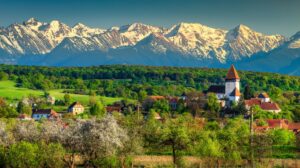
Then we determined, or rather she wanted to go up the Amazon, and so we joined a class of Portuguese for the Traveller which, like so many of those crammed courses, is totally useless, especially if you don’t have an ear for languages. Yet I have persisted through a Portuguese teacher and now a Brazilian, and my love of the language and the diverse culture not only between the two countries, but within, has soared.
In many ways, Portuguese resembles French more than Spanish; but that is a contentious proposition. French monks were indeed the first people to write down the Portuguese language and linguists argue that the common tortuous grammar, especially the irregular verbs, have French “tendencies”. Secondly, extensive French immigration during the first decades of XII century most of the western coastal region around nowadays Torres Vedras, Caldas da Rainha and Alcobaça were colonised by French from Burgundy. And as an afterthought, the two languages share the cedilla (ç).
Needless to say, Brazilian Portuguese is different.
May I say, even though I have driven through the Swiss canton of Grisons on the way to Liechtenstein, I never heard the least known member of the Romantic language, Romansch, spoken. Although it is one of the national languages of Switzerland (which is a story in itself) and a remnant of the time the Romans occupied the territory, I suspect it has survived due to the isolation of the community in the Alps. For someone who lives in Sydney, the repeated references to Engadine in the Romansch exchanges was disconcerting. Engadine is a suburb of Sydney, but also Engadine is a long high Alpine valley region in the eastern Swiss Alps. Romansh is vaguely akin to Italian and French but its speakers sound German. Guttural and Romantic are strange bedfellows. As one said, it sounds like Italian with a German accent.
There you are – rambling through a field of mild obsession which unfortunately my Topo has picked up in his whispering below.
Laura
Sometimes you read something trivial; prosaic, but it strikes a chord.
However, let’s begin by writing that some years ago, I bought a book second-hand. It had come from the collection of David Raksin. It was a name I was not familiar with, but anybody who shared my taste in books at least was worth investigating.
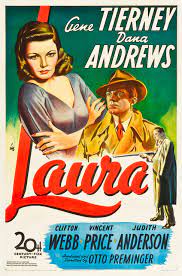 He wrote the tune “Laura”, his most memorable work, which was the theme woven into the film of the same name, a film noir in the traditions then of Hollywood. It starred Gene Tierney as Laura. She was an extraordinarily beautiful woman at least on the celluloid. The film still is worth watching, and the theme has endured, recorded by a large number of artists. It always reminds me of waiting for someone to come – but who never did. Some might characterise it as “haunting”. During his life, it was the second most recorded work after “Stardust”.
He wrote the tune “Laura”, his most memorable work, which was the theme woven into the film of the same name, a film noir in the traditions then of Hollywood. It starred Gene Tierney as Laura. She was an extraordinarily beautiful woman at least on the celluloid. The film still is worth watching, and the theme has endured, recorded by a large number of artists. It always reminds me of waiting for someone to come – but who never did. Some might characterise it as “haunting”. During his life, it was the second most recorded work after “Stardust”.
Charlie “Bird” Parker, one of the great saxophonists, recorded “Laura” and this comment below was attached to his “Bird” version of the tune. As they say in the cliches of our time, the comment has resonated with me.
I met a Laura once, way back in 1964. I met her at a party, we were teenagers but grown up in the way kids were back in Philly of the 1960’s. She was so perfect. Beautiful, smart, engaging, and she liked me. I fell madly in love with her, right there and then. We danced and she fit into my entire spirit. And then the party was over and we all had to connect with our various rides. She chose to ride with me and my friends and we drove her home. She sat next to me, both of us breathless. And standing on the porch was her father, who looked like he would kill me – or any other boy!!! I wasn’t able to get her telephone number and I never saw her again. All these years later, I can still feel her…
I know how he felt. Our universe then was full of fumbling uncertainty. In my case, her father was a civil educated man. Her name was not Laura, but I persisted.
Mouse Whisper
It’s pretty much clearly Romantic – here it’s in black and white
NIGER
Noir nero negro preto negru nair
ALBUS
Blanc bianco blanco branco alb alv




 Queensland has sent its Chief Health Officer to be Governor, where she can be important without being important. It should be recognised inter alia that a whole Queensland strawberry crop was trashed in 2018 at the cost of $160m, where Dr Young’s advice played a prominent role. As one commentator noted recently on this situation, where needles were found in in strawberries at three sites: “However, in a way, it’s actually kind of quaint to be reminded that a public health scare with three reported instances led to a major national response while the largest COVID outbreak and death toll in the country is followed with talk of how soon we can get the pubs back open.”
Queensland has sent its Chief Health Officer to be Governor, where she can be important without being important. It should be recognised inter alia that a whole Queensland strawberry crop was trashed in 2018 at the cost of $160m, where Dr Young’s advice played a prominent role. As one commentator noted recently on this situation, where needles were found in in strawberries at three sites: “However, in a way, it’s actually kind of quaint to be reminded that a public health scare with three reported instances led to a major national response while the largest COVID outbreak and death toll in the country is followed with talk of how soon we can get the pubs back open.”
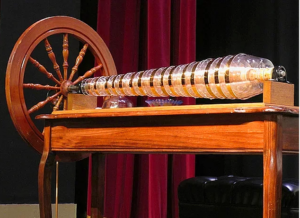
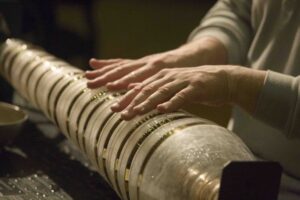

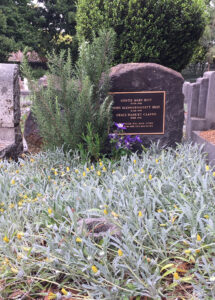 When I decided that my late parents should have some recognition and a High Celtic Cross was beyond my means and a tad over-the-top anyway – apart from which, I found those traditional grey monumental slabs so cold and depressing – I decided that I would place a bluestone rock as the headstone.
When I decided that my late parents should have some recognition and a High Celtic Cross was beyond my means and a tad over-the-top anyway – apart from which, I found those traditional grey monumental slabs so cold and depressing – I decided that I would place a bluestone rock as the headstone.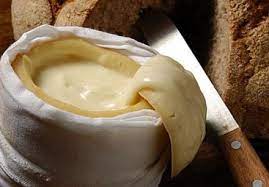

 Does Goffman give any clue as to how the inmate should respond? No, he does not. His analysis of various responses to lockdown is well catalogued whether monastery or mental hospital. The concept of a prolonged imprisonment was not seen as the consequence when the Virus first appeared early last year. Then a selection of politicians from both sides of politics participated in light-hearted advertisements to encourage hand washing. It was as though it was similar to the mood at the outbreak of WW1 when the early prediction was of the conflict being over by Christmas 1914.
Does Goffman give any clue as to how the inmate should respond? No, he does not. His analysis of various responses to lockdown is well catalogued whether monastery or mental hospital. The concept of a prolonged imprisonment was not seen as the consequence when the Virus first appeared early last year. Then a selection of politicians from both sides of politics participated in light-hearted advertisements to encourage hand washing. It was as though it was similar to the mood at the outbreak of WW1 when the early prediction was of the conflict being over by Christmas 1914.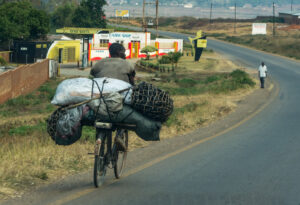
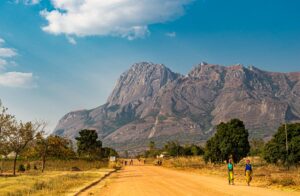

 In recent years, in New South Wales we have seen: a Minister of the Crown gaoled for bribery; an inquiry into a second, and indeed a third, former Minister for alleged corruption; the former Chief Stipendiary Magistrate gaoled for perverting the course of justice; a former Commissioner of Police in the courts on a criminal charge; the former Deputy Commissioner of Police charged with bribery; a series of investigations and court cases involving judicial figures including a High Court Judge; and a disturbing number of dismissals, retirements and convictions of senior police officers for offences involving corrupt conduct… No government can maintain its claim to legitimacy while there remains the cloud of suspicion and doubt that has hung over government in New South Wales.
In recent years, in New South Wales we have seen: a Minister of the Crown gaoled for bribery; an inquiry into a second, and indeed a third, former Minister for alleged corruption; the former Chief Stipendiary Magistrate gaoled for perverting the course of justice; a former Commissioner of Police in the courts on a criminal charge; the former Deputy Commissioner of Police charged with bribery; a series of investigations and court cases involving judicial figures including a High Court Judge; and a disturbing number of dismissals, retirements and convictions of senior police officers for offences involving corrupt conduct… No government can maintain its claim to legitimacy while there remains the cloud of suspicion and doubt that has hung over government in New South Wales.


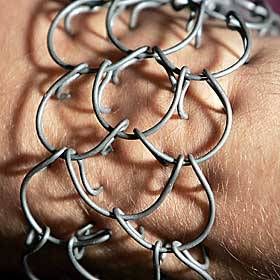

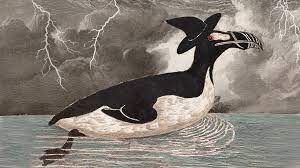
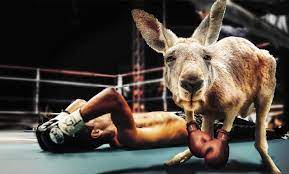




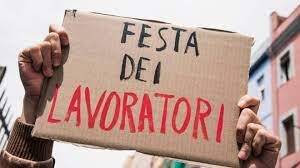

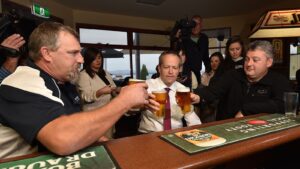
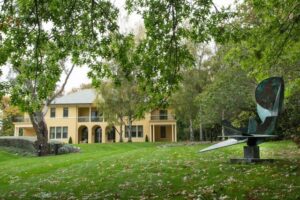
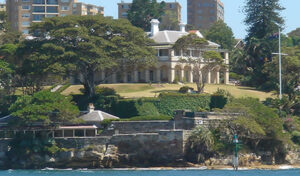
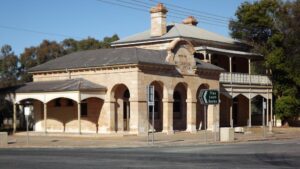
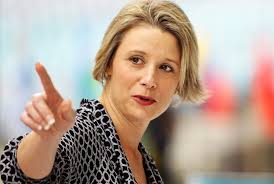
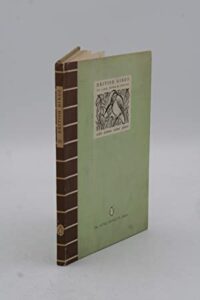 The first book had a pale green cover, with brown solid edges with white streaks between each brick, like ribbons of mortar. The full title British Birds on Lake, River and Stream lies over an inked cartoon of a kingfisher. There were 16 colour plates taken from John Gould’s massive collection of Birds of Great Britain, which extended to seven volumes. In a one shilling crown octavo pocket size book, the King Penguin is an elegant sampler, beautifully presented, of often esoteric subjects. The introductory description of this first one acknowledged how Gould spent several years in Australia and prepared a 600 plate Birds of Australia and is regarded as the Father of Australian ornithology.
The first book had a pale green cover, with brown solid edges with white streaks between each brick, like ribbons of mortar. The full title British Birds on Lake, River and Stream lies over an inked cartoon of a kingfisher. There were 16 colour plates taken from John Gould’s massive collection of Birds of Great Britain, which extended to seven volumes. In a one shilling crown octavo pocket size book, the King Penguin is an elegant sampler, beautifully presented, of often esoteric subjects. The introductory description of this first one acknowledged how Gould spent several years in Australia and prepared a 600 plate Birds of Australia and is regarded as the Father of Australian ornithology.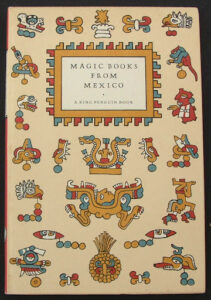
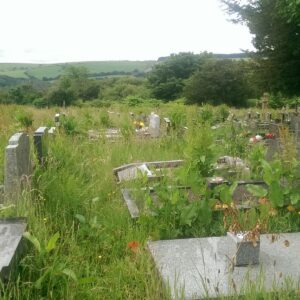

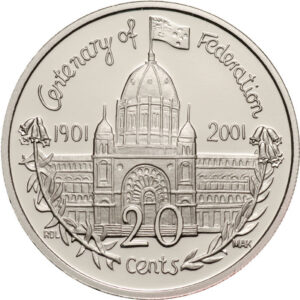 On the 9-10 May 2001, the House of Representatives met in Melbourne to celebrate the Centenary of Federation Commemorative Sittings. Twenty years on, only five of those who were sitting as Members that day are still members of Parliament.
On the 9-10 May 2001, the House of Representatives met in Melbourne to celebrate the Centenary of Federation Commemorative Sittings. Twenty years on, only five of those who were sitting as Members that day are still members of Parliament.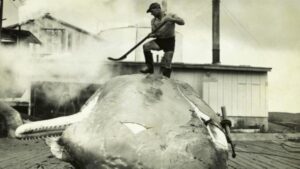
 Richard Hatchett is the Chief Executive Officer of the Coalition for Epidemic Preparedness Innovations (CEPI), the Oslo-based organisation formed in 2017. The following blurb, even suitably abridged, sets out the objectives:
Richard Hatchett is the Chief Executive Officer of the Coalition for Epidemic Preparedness Innovations (CEPI), the Oslo-based organisation formed in 2017. The following blurb, even suitably abridged, sets out the objectives: Richard Hatchett in 2017 ended up running CEPI, which was a critical position as related in the book, because it was able to redirect substantial funding in the development of vaccines, particularly Moderna and AstroZeneca, when the pandemic struck and the Virus was isolated. Funding was also provided by CEPI to the University of Queensland for its ultimately failed vaccine. Considering the hype surrounding this group, perhaps more reliance was placed on its success than should have been. In any event, it left Australia with very few vaccine paddles, later in 2020. At that time Australia was basking in its success of suppression of the Virus.
Richard Hatchett in 2017 ended up running CEPI, which was a critical position as related in the book, because it was able to redirect substantial funding in the development of vaccines, particularly Moderna and AstroZeneca, when the pandemic struck and the Virus was isolated. Funding was also provided by CEPI to the University of Queensland for its ultimately failed vaccine. Considering the hype surrounding this group, perhaps more reliance was placed on its success than should have been. In any event, it left Australia with very few vaccine paddles, later in 2020. At that time Australia was basking in its success of suppression of the Virus.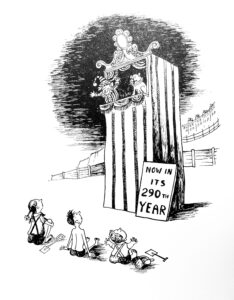 The children on the beach watching a Punch and Judy show. The sign against the beach stage read “Now in its 290th year”.
The children on the beach watching a Punch and Judy show. The sign against the beach stage read “Now in its 290th year”.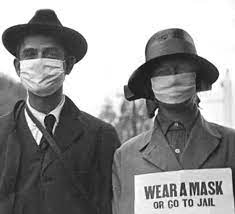 In 1918 the community was hit by the influenza pandemic which, some say, never really went away. It just became attenuated; but there have been pandemic years. I remember the Asian flu pandemic in 1957 because I ended up in Fairfield Infectious Diseases Hospital. There have been outbreaks since, all caused by descendants of the Spanish flu virus, generally milder and seasonally self-limited. In summary, seasonal influenza has tended to kill the oldest and youngest in a society but has been less virulent since the 1918 pandemic – roughly half of those who died were men and women in their 20s and 30s, in the prime of their lives.
In 1918 the community was hit by the influenza pandemic which, some say, never really went away. It just became attenuated; but there have been pandemic years. I remember the Asian flu pandemic in 1957 because I ended up in Fairfield Infectious Diseases Hospital. There have been outbreaks since, all caused by descendants of the Spanish flu virus, generally milder and seasonally self-limited. In summary, seasonal influenza has tended to kill the oldest and youngest in a society but has been less virulent since the 1918 pandemic – roughly half of those who died were men and women in their 20s and 30s, in the prime of their lives.


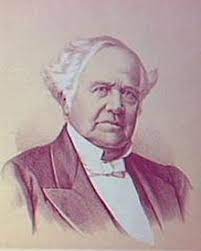
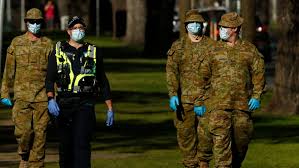



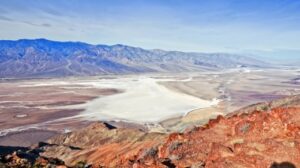

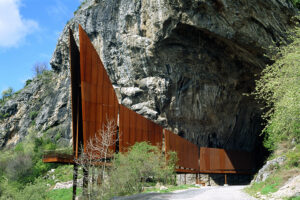
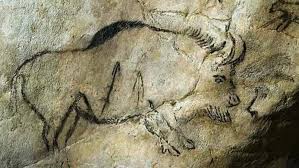
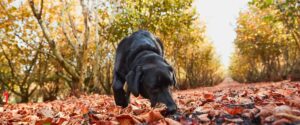
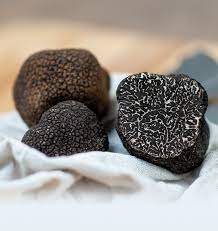 Although France is associated with truffles, the most expensive ones are the white truffles found in Piedmont and Tuscany. Their prices can approach $10,000 a kilogram (whereas the Australian black Périgord truffles retail for $2,000 a kilogram). The white truffles are scarce, partially because nobody has ever been able to cultivate them. Needless to say, there is all this palaver about their smell and taste to justify the lengths to which people go to find these potato-shaped fungi.
Although France is associated with truffles, the most expensive ones are the white truffles found in Piedmont and Tuscany. Their prices can approach $10,000 a kilogram (whereas the Australian black Périgord truffles retail for $2,000 a kilogram). The white truffles are scarce, partially because nobody has ever been able to cultivate them. Needless to say, there is all this palaver about their smell and taste to justify the lengths to which people go to find these potato-shaped fungi.
